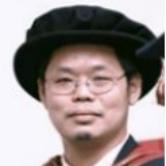
Mohammad Faiz Abdullah
Work place: Faculty of Electrical and Electronic Engineering, University Tun Hussein Onn Malaysia (UTHM), Parit Raja, 86400 Batu Pahat, Johor, Malaysia
E-mail: faiz@uthm.edu.my
Website:
Research Interests: Optical Communication
Biography
Mohammad Faiz Liew Abdullah received BSc (Hons) in Electrical Engineering (Communication) in 1997, Dip Education in 1999, and MEng by research in Optical Fiber Communication in 2000 from University of Technology Malaysia (UTM). He completed his PhD in August 2007 from The University of Warwick, United Kingdom in the area Wireless Optical Communication Engineering. He started his career as a lecturer at Polytechnic Seberang Prai (PSP) in 1999 and was transferred to UTHM in 2000 (formerly known as PLSP). At present he is a Professor in the Department of Electronics Engineering, Faculty of Electrical & Electronic Engineering and Senate Member University Tun Hussein Onn Malaysia (UTHM). He had over 20 years’ experience of teaching in higher education, which involved the subject Optical Fiber Communication, Advanced Optical Communication, Advanced Digital Signal Processing and etc. His research area of interest is Wireless and Optical Communication, Material Solar Cell fabrication, Image Watermarking Technique and Railway Engineering in communication. He is currently supervising Eight Postgraduate Student, where Eight PhD student has graduated. He is a Senior Member of IEEE, Charter Engineer (CEng) and Senior Member of IET.
Author Articles
Effect of Line-of-sight Channels on DC-biased Optical Filter Bank Multicarrier Visible Light Communication with Multiple LED Arrays
By Mohammed Ali Asban Rahmat Talib Mohammad Faiz Abdullah Mohammed S. M. Gismalla
DOI: https://doi.org/10.5815/ijcnis.2024.03.02, Pub. Date: 8 Jun. 2024
This paper investigates the impact of propagation delay and channel loss due to the use of multiple LED arrays in visible light communication (VLC) systems based on filter bank multicarrier (FBMC) modulation. FBMC offers greater spectral efficiency, and asynchronous transmission and is a promising alternative scheme to orthogonal frequency division modulation (OFDM). The proposed FBMC model is based on 4-quadrature amplitude modulation (QAM) and 16-QAM formats and uses 100 symbols and 600 input bits per symbol. In this paper, the VLC-FBMC system is designed based on the line-of-sight (LOS) model under the additive white Gaussian noise (AWGN) channel. Comparison analyses between different bit rates in terms of bit error rate (BER), best sampling point, and signal-to-noise ratio (SNR) requirement have been carried out to show the delay and loss effect on communication quality and system performance. The results demonstrate that the proposed FBMC model achieves a bit rate of up to 29.296 Mbit/s with a low BER of 10-3 and less SNR penalty in high QAM formats, demonstrating its potential as a viable alternative to OFDM for future VLC systems.
[...] Read more.Other Articles
Subscribe to receive issue release notifications and newsletters from MECS Press journals